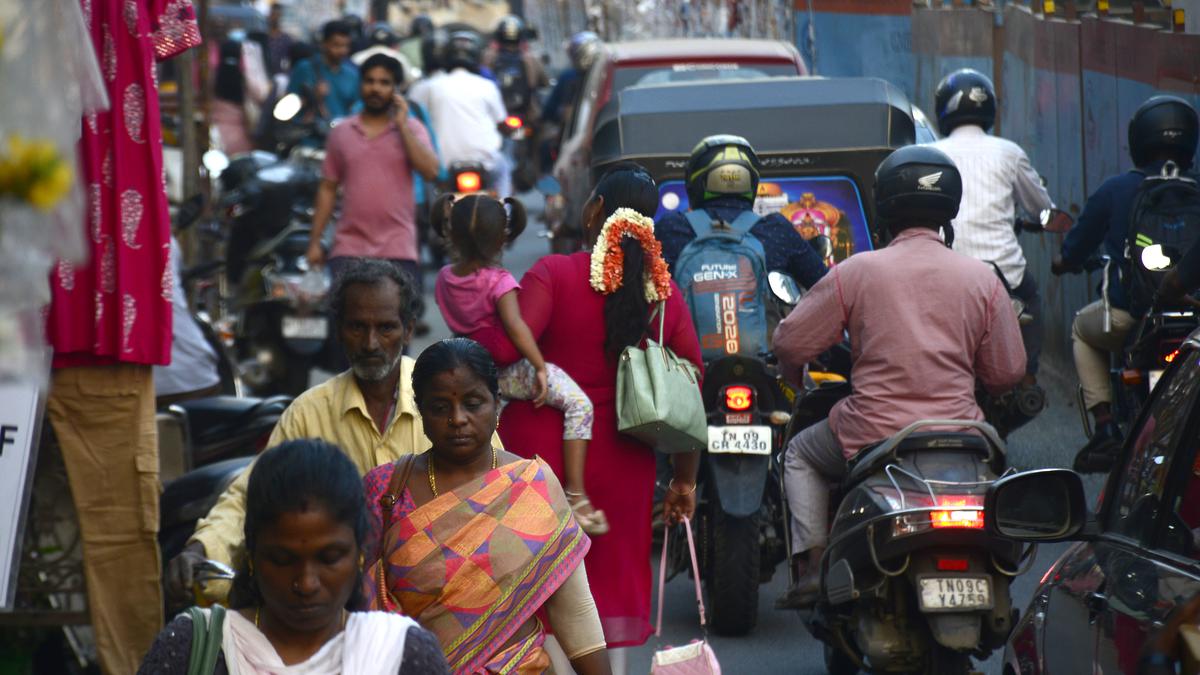
Metro Rail’s phase II construction eats up footpaths, irks commuters
The Hindu
Metro Rail's phase II project in Chennai has significantly reduced road space, leaving pedestrians with unsafe walking conditions.
Ever since Metro Rail’s phase II project started in the city to build elevated viaducts, tunnels, underground and elevated stations, road space has shrunk significantly and pedestrians have been deprived of their space to walk safe. This is because footpaths in many areas have made way for construction and piles of debris.
In the three corridors — Madhavaram to SIPCOT, Light House to Poonamallee, and Madhavaram to Sholinganallur — which are being constructed for the 116-km phase II project, work is being carried out in full swing across the city. In many areas, including Arcot Road, Adyar, Royapettah, Purasaiwalkam, Medavakkam, and Old Mahabalipuram Road, the width of the roads has shrunk, because of the construction, and there is no footpath at most places. In some locations, railings have been placed along the barricades on one side of the road through which pedestrians have to walk carefully.
Vidyasagar Jagadeesan, a commuter and civic activist, says that in Old Mahabalipuram Road, where the work is in progress from Taramani all the way up to SIPCOT at Siruseri, walking has become nearly impossible at several locations, with speeding vehicles and reduced carriageway. “Even the service lanes are unavailable and taken over by vehicles. While office-goers can at least take their vehicles, many senior citizens who walk to nearby places will find it very difficult. It is also dangerous for them to walk through such arterial roads without footpaths,” he says.
In the absence of a footpath, even whatever little space is available for pedestrians is used for parking vehicles. “In a few locations along the stretch between Sholinganallur and Medavakkam, either two-wheelers and autorickshaws or encroachments have made it tough for people to walk,” he adds.
Smritika Srinivasan, an urban planner and commuter, says the Indian Road Congress rules mandate that the footpath be two-metre wide, making it comfortable for not only pedestrians but also those using wheelchairs to use the space with ease. During construction too, they should have at least a 1.8-metre-wide footpath. But this is not the case in many parts of the city. For instance, on Arcot Road where she resides, walking 200 metres to reach the Vadapalani Metro Rail station itself is like a huge challenge, she says.
“Earlier, before the Metro Rail work began, there was a convenient footpath available and it was used by many people. But, ever since the work commenced, footpaths were demolished and vehicles occupy the entire road space, almost up to the compound wall of the buildings. There is always a fear among pedestrians, like me, of being hit and I look back every few metres to ensure I don’t come in the way of a speeding bike or a bus. Sometimes, it becomes a tiring exercise, and I give up the Metro Rail ride and take an auto or a cab,” she says.
Across the city, in many locations, including the areas where Metro Rail construction is in full swing, there is no continuous and well-connected footpath available for pedestrians, Ms. Srinivasan adds.













